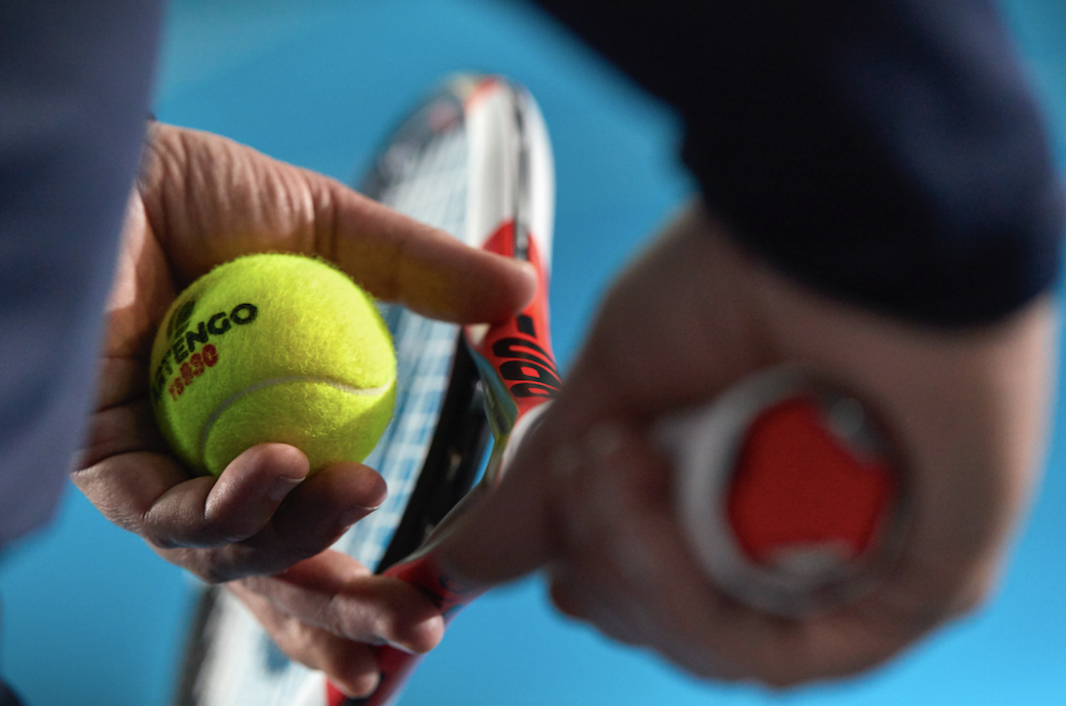
6 Easy Tips to Improve Your Tennis Game
Share
The weather is warming up and it’s time to take your tennis game outside. After the French Open, watching the first few days of Wimbledon might've inspired you to get out there and give it your all. However, if it’s been awhile, you may have noticed that your strokes aren’t as consistent as they used to be. To boost your game, here are a few physical adjustments you can make on the court to help you get back to Rafael Nadal level.
1) Footwork
Don’t think, just hit the ball. All strokes start from the ground upwards. Footwork is incredibly important because first and foremost, you need to be in the right position to hit the ball. The #1 cause of a missed shot is not the stroke itself, but being out of position to hit it. Hitting a shot outside of your strikezone, when you are unbalanced, or unable to take a full swing can lead to mishits. These mistakes are directly tied to inefficient footwork. There are many footwork drills you can do to improve so that before you know it, you will be running through the motions without even thinking. Footwork also improves your agility and keeps you alert. A good practice for this that many players do is to have a coach or friend toss a ball as if it is a normal drill, but you must go up and catch it. This makes sure you are not reaching for your shots and gives you experience getting into the right position. There are some useful videos with examples of good footwork drills on Human Kinetics.
2) Bend your knees
Injuries like tennis elbow might make you think that tennis involves a lot of arm strength, but you should actually be using less of your arms and more of your legs to play tennis. If your arms are more sore than your legs, you may even be doing something wrong. Too much strain on your arms could lead to injuries like the one listed above. A better way of playing is to make sure you are getting your weight loaded on your back leg before you hit each shot. It is the pushing of your legs upwards and swinging your hips forward that generates power. This prevents reaching and loss of power. When you push forward and extend your legs at the right time you will be able to hit the ball with your ultimate power.
3) Hit the ball on the rise
This strategy will give your opponent less time to react. The ball will also have more speed coming off of it, which will cause you to hit a harder return shot. For approach shots you can also hit the ball at the very top of the bounce to get the best angle to hit a powerful shot. You should note that to hit the ball on the rise you must be able to time it very well since it does not hang in the air as it does at the top. This can really help for service returns as long as you keep a shorter backswing to get your racket to the ball in time.
4) Exaggerate your follow through (except on your volleys)
This may sound basic, but it is a key component of your game that has a huge effect. The motion of catching the swing with the other hand (for a forehand) is imperative to getting a full rotation and not losing any power caused by that non-dominant shoulder staying stationary and in the way. This motion also makes sure that you are getting your power from your legs and hip rotation, as talked about earlier, instead of just your arm. Having a second hand support for your follow through will loosen up your arm and actually give you more control of the ball with your swing. It will even the lead to more consistency since you have more of a frame of reference for each shot based on the position of your follow through.
5) Hit and recover
We’ve all been found guilty of watching that amazing forehand you think your opponent will never return, or that shot you’re not sure will go in. Most players are told in the beginning to recover back to the middle, but it is not always so simple. If you are hitting the ball back and forth with an opponent crosscourt, you should recover 2-3 feet from the center of the court on the side you’re hitting from. This is because the easiest shot for your opponent to hit is back crosscourt, so you should be prepared to cover that area. Make sure to split step right before your opponent hits their shot so that you can use the balls of your feet to push yourself in the direction of the next shot. If you hit a solid shot you can move forward to attack. However, if you hit a weaker shot move backwards diagonally to cover the baseline.
6) Stretch
You hear this time and time again, but it really is essential to your game. You need your limbs to warm up your muscles and feel your best. Stretching can also prevent injury. Tennis is a very hard sport on specific joints, so it is important for your long-term playing to always stretch before playing. Lately more research has shown that dynamic stretches targeting specific motions are better to warm up before you play. After your match, you can use some of these static stretches to combat the chance of injury.

Now you’re ready to get out there and play! Vamos! These tips will have you upping your game in no time. If you want to work on your serve, that’s a whole different ball game...















